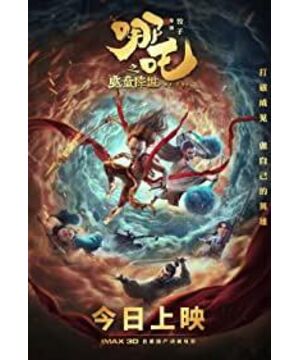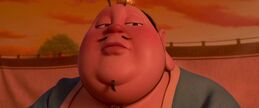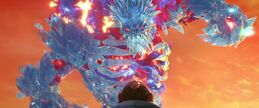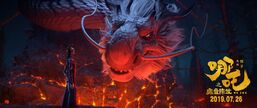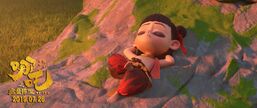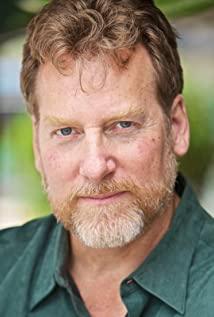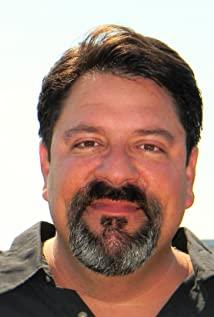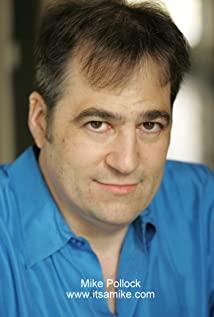After reading "Nezha: The Devil Child Comes into the World", the two-word comment: Subversion.
You may ask, is subversion always good?
Let me change another word: innovation .
Yes, this is a very innovative animated film.
And its innovation is implemented "from the outside to the inside". Let's talk about the outside first, then the inside.
"Outside" refers to "image" .
If you have watched the short film "Hit, Hit a Big Watermelon" by the director Jiaozi, you must have already felt the evil spirit in him.
In "Nezha: The Devil Boy Comes into the World", I saw this evil spirit again, and the focus is on the character image.
Nezha in the film, I guess you can't recognize it anymore.
He painted smoky makeup, smiled wickedly, put his hands in his pants pockets, and played pranks everywhere. There is still a word in the mouth: "I am a little monster, happy and at ease. I kill people without blinking, and eat people without salt."
Just like a wicked child full of enchantment.
As for the real master Taiyi of Nezha, he is no longer a wise man with the bones of immortality, but a greasy middle-aged man who rides a pig and fucks Trump all day.
Nezha's father, Li Jing, also changed the cold image of the feudal parents and became a loving father.
Although the villain Shen Gongbao was still vicious, he was a stutterer, always making jokes at critical moments, which partly dispelled his hostility.
And Ao Bing, the third prince of the Dragon King in "Nezha Naohai", also transformed into a fluttering white boy.
These adaptations of the image are bold.
So that it is difficult for some people to accept, why did Nezha, who was originally childish and frank, suddenly turned into a dark look?
But I want to say that I recognize this adaptation. It even excites me.
The first is that it dares to be the first.
Secondly, this adaptation is not random, but targeted.
Nezha's image can be ever-changing, but what is the core?
It is rebellious .
And what is a rebellious child who is not an evil child?
From this perspective, "The Devil Boy of Nezha" just exaggerated the "rebellious" characteristics of Nezha in the form of comics, forming a new image that is consistent inside and outside.
This is called innovation, from a traditional image, grasping the characteristics, focusing, amplifying, and strengthening according to the needs of the play, so as to nurture a new life.
After saying "outside", we said "inside".
"Nei" refers to "the core of the story." The biggest innovation of "Nezha: The Devil Boy Comes into the World" is reflected in this.
We are all too familiar with the story of Nezha, and it has been presented in countless literary and artistic works.
One of the most classic ones comes from the domestic animation "Nezha Nao Sea" in 1979. It is not an exaggeration to say that this animation has almost laid the modern people's imagination of "Ne Zha".
In the film, Nezha wounded Yasha, killed Ao Bing and made trouble in the Dragon Palace in order to rescue the virgin boys and girls abducted by the Dragon King. In a rage, the Dragon King threatened to flood Chentangguan. In order to save the people of Li people, Nezha drew his sword and killed himself, giving up his life for righteousness.
It is a tragic story of resistance to power.
If it weren't for the recent rewatch, I would have forgotten the plot of Nezha's rebirth at the end of the animation, because the previous scenes of him drawing his sword and slaying himself were too impressive for me.
Before the suicide, Nezha once said: "Father, the child will give you back the flesh and blood, and I will not hurt you."
This is too decisive.
Of course, you can understand it as the heroism of "one person doing things, one person", but in a deeper sense, it implies resistance to "patriarchy".
The father Li Jing in the film is a strict father, but on the other hand, facing the power of the Dragon King, he is cowardly.
If Nezha obeyed his father, he would surrender to the Dragon King; if he obeyed his heart, he would certainly disobey his father again. So he cut off the blood ties with his father, and went to death, in order to achieve his lonely innocence.
The shock of " self-destruction due to self-esteem " is huge.
In "Nezha Nao the Sea", Nezha faces the challenge of external power to inner principles.
This duality between inside and outside is extremely obvious.
So what's the difference in "Nezha: The Devil Child Comes to the World"?
Frankly speaking, this animation does not have an absolute external villain, even Shen Gongbao-this apparent contradiction, is not Nezha's greatest threat.
So what is the villain of this animation?
It is a more abstract existence called: destiny.
Nezha in the film was originally supposed to be the "Reincarnation of the Spirit Orb", but was tuned into the "Reincarnation of the Magic Pill" and was born as a born demon king.
But he did not accept his fate, determined to be a hero to save the common people.
It is a pity that in the eyes of the villagers, he is always a monster. Everyone is afraid of him, hates him, and even wrongs him after he has done good things.
The incomprehensible Nezha confessed his fate for a while, he even broke the jar and deliberately became the devil to show everyone.
In this process, we see that Nezha is being controlled by two destinies: one is "fate" and the other is "human fate."
Specifically, "Magic Pill Possession" means fate, and "prejudices of everyone" means fate. What he has to do is how to resist these two destinies and finally live out "my life."
Yes, the most interesting part of "Nezha: The Devil Child Comes into the World" is the establishment of this " three-life structure ".
It actually responds to an old philosophical proposition: Who am I?
This also makes it emerge from traditional myths and stories, and has more modern significance.
Not only Nezha, we watched Ao Bing in the film, he also suffered from these two destinies.
The difference from Nezha is that Nezha's two destinies are in the same direction, and both are pulling him on the road of "evil", while Ao Bing's two destinies are contrary, making him extremely entangled.
Ao Bing was originally a "Lingzhu reincarnation" and was born to be good. But as a dragon, he shoulders the mission of revitalizing the entire dragon. That mission required him to kill Nezha (the devil), make contributions, and help the whole family stand up.
Destiny is good, and human destiny is evil. Ao Bing didn't know where to go.
Look at the nominal villain Shen Gongbao in the film, although he did do bad things, but in the final analysis, he is just a person who is swayed by fate.
He was originally a leopard, and as a demon clan, he was somewhat inferior. Later, he worshipped at Yuanshi Tianzun's door, and felt deeply that he had not met his talents.
When the master wanted to give the last seat of the Twelve Golden Immortals to True Person Taiyi, Shen Gongbao grew out of jealousy and wanted to use despicable means to achieve himself.
From this we can see what this animation is talking about.
It's about: How can one deal with oneself when one's fate is not fulfilled and the fate is not fulfilling one's expectations?
Shen Gongbao's "demon clan status" is his "destiny"; his "unreliable talent" is his "life".
In order to resist the unfair fate, he colluded with the Dragon Clan, who was also a monster clan, and contracted magic pills and spirit beads, and cultivated Ao Bing in an attempt to kill Nezha.
The reason why he did all this seems to be rebelling against fate, but in fact he just wanted to earn himself the title of "Twelve Golden Immortals".
After all, he still admitted his fate.
He gave the right to judge his "own value" to others, so he lost himself forever.
In contrast, Ao Bing and Nezha.
They are the ultimate victor. This kind of victory is not about someone who has been defeated on the surface, but they have found themselves in their hearts.
Even though Ao Bing was once lost, and even though Nezha was also angry and willing to be a demon king, in the end, they did not accept their fate, whether it was said by heaven or by man, it is not counted.
As the subtitles at the end of the film say : "If you don't admit your fate, it's Nezha's fate. "
And the words his father told Nezha: "Who you are is up to you."
This is what "The Devil Boy of Nezha" wants to tell us.
Finally, I also want to praise the scriptwriter and director of this animation Jiaozi.
You can clearly feel that the plot of this animation is not a piece of fragments to create drama, but a whole, which is designed from top to bottom and executed consistently.
This enables the whole animation to justify itself, yet with such a clear theme.
From this point alone, I think "Nezha: The Devil Child Comes into the World" has surpassed Caitiaowu Pictures' three previous works "Big Fish and Begonia", "The Great Guardian" and "The Return of the Great Sage".
Although these three works are not limited to children's field, they have their own very clear and even in-depth expressions, but the degree of completion is not as mature as that of "Nezha: The Devil Child Comes into the World".
At the end of the film review, I would like to say a few more words about innovation.
Seeing some people on the Internet began to shout again: "Return me Nezha, return my classics, return me this and that...... I am really speechless."
I just thought of a line in this animation: " The prejudice in people's mind is a mountain, no matter how hard you work, you can't move it. "
It seems that this is still right.
Anyway, I recommend this animation, it allows me to see the occurrence and results of innovation.
From now on, I have two Nezha in my heart.
One is that Nezha standing on a high platform, facing the wind and rain, drew his sword and squatted himself.
The other was Nezha who rushed to Tianlei and shouted, "My life is up to me."
These two Nezha, there is no first come, no one is more serious, they are all classics in my heart.
View more about Ne Zha reviews


